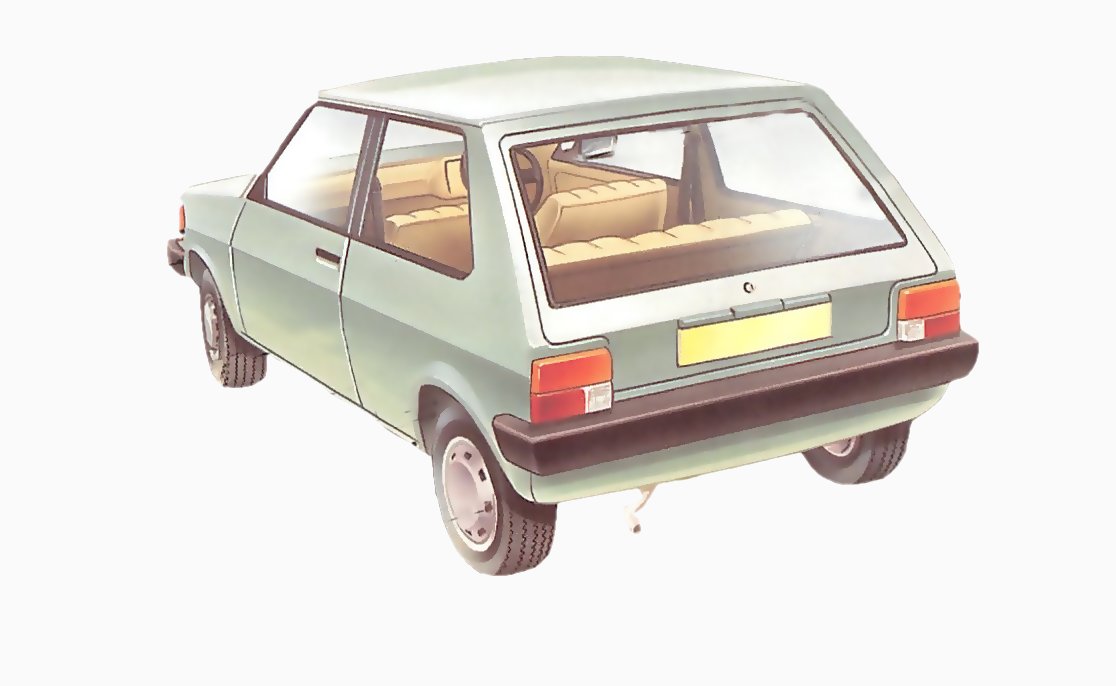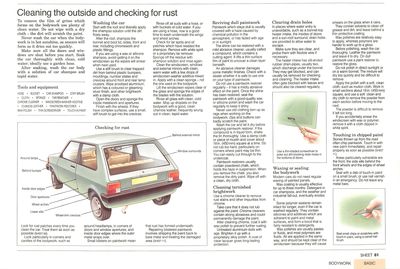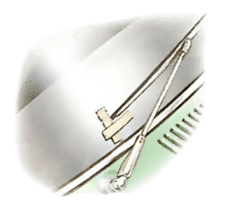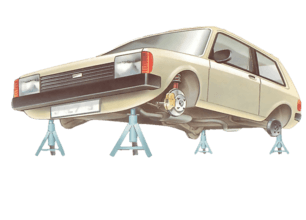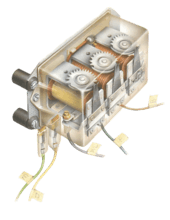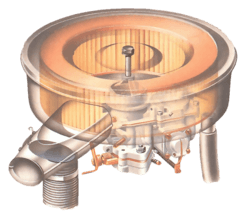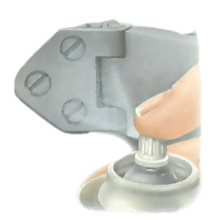
Vous pourriez avoir besoin de
Where to check a car for rust
To remove the film of grime which forms on the bodywork use plenty of clean water. Do not wipe with a dry cloth — the dirt will scratch the paint.
Never wash the car when the bodywork is in hot sunshine, as smears will form as it dries out too quickly.
Make sure all the doors and windows are shut before you start. Soak the car thoroughly with clean, cold water; ideally use a garden hose.
This video course is the best way to learn everything about cars.
Three hours of instruction available right now, and many more hours in production.
- 4K HD with full subtitles
- Complete disassembly of a sports car
After soaking, wash the car body with a solution of car shampoo and tepid water.
Washing the car
Start with the roof and liberally apply the shampoo solution until the dirt floats away.
After the roof, shampoo the bonnet and boot lid, sides, front and rear, including chromework and plastic fittings.
If you are using a wax or silicone shampoo, avoid getting it on the windscreen as the wipers will smear when next used.
Use a stiff brush to clear trapped dirt from behind plastic bumpers, mouldings, number plates and crevices around front and rear lamp clusters. Wipe anodised aluminium, which has a coloured or gleaming silver finish, and other brightwork with a damp cloth.
Open the doors and sponge the inside metalwork and apertures.
Finish with the wheels. If they have complex surfaces, use a small, stiff brush to get into the crevices.
Rinse off all suds with a hose, or with buckets of cold water. If you are using a hose, now is a good time to wash underneath the wings and wheel arches.
Check for tar spots and oil patches which have resisted the shampoo. Remove with white spirit or a proprietary tar remover. Sponge off the residue with shampoo solution and rinse again.
Clean the windscreen, windows and external mirrors with clean, warm water with a few drops of windscreen-washer additive mixed in. Apply with a clean sponge — not the one used on the bodywork.
Lift the windscreen wipers clear of the glass and sponge the edges of the blades with the solution.
Rinse all glass with clean, cold water. Mop up droplets on the bodywork with a good, clean chamois leather, frequently wrung out in clean, tepid water.
Reviving dull paintwork
Paintwork which stays dull is usually covered with a haze caused by chemical pollution in the atmosphere, or has faded with age or in sunlight.
The shine can be restored with a mild abrasive cleaner, usually called a compound, which contains a cutting agent. It lifts a thin surface film of paint to uncover a clean layer beneath.
An abrasive cleaner damages some metallic finishes. Check with a dealer whether it is safe to use one on your type of paintwork.
Do not use a paintwork restorer regularly — it has a mildly abrasive effect on the paint. Once the shine has been restored, seal the paintwork with a good-quality wax or silicone polish and wash the car regularly to keep it shiny.
Never use old clothing torn up as rags when working on the bodywork. Zips and buttons can badly scratch the paint.
Wash the car and let it dry before applying paintwork restorer. If the compound is in liquid form, shake the tin thoroughly. Use a damp cloth or piece of muslin and cover about 18 in. (450 mm) square at a time. Do not rub too hard, particularly on corners where paint may be thin. You can easily cut through to the undercoat.
Paintwork restorers usually contain powdered chalk, which holds the haze in suspension. When you remove the chalk, you also remove the dirty paint. Wipe off with a clean, dry cloth.
Cleaning tarnished brightwork
Use a chrome cleaner to remove rust stains and other impurities from chrome.
Take care that it does not rub against the paint. Chrome cleaners contain strong abrasives and could permanently damage the paint.
After cleaning chrome, coat it with wax polish to prevent further rusting.
Untreated aluminium dulls with age. Brighten it up with a proprietary alloy polish. A coat of clear lacquer gives long-lasting protection.
Clearing drain holes
Use a thin-bladed screwdriver to poke out direct blocking drain holes in the bottoms of doors.
In places where water entry is unavoidable, such as a bonnet-top heater intake, the insides of doors and a sun-roof surround, drain holes are provided to allow water to escape.
Make sure they are clear, and probe them with flexible wire if necessary.
The heater intake has slit-ended rubber drain-pipes, usually two, which discharge under the bonnet. They may get blocked, and can usually be removed for checking and cleaning. The heater intake often gets blocked with leaves and should also be cleared regularly.
Waxing or sealing the bodywork
Modern cars do not need regular waxing of painted panels.
Wax coating is usually effective for up to three months. Detergent in car shampoos, and the weather and industrial fall-out, eventually erodes it.
Some polymer sealants remain intact for longer, even if the car is washed regularly. They contain silicones and additives which are adherent to paint and metal surfaces, and form a bond that is fairly resistant to detergents.
Wax polishes are usually pastes or fluids, and most polymers are fluids. All are applied in the same way, and should be kept clear of the windscreen because they will cause smears on the glass when it rains.
They contain solvents to clean off grease and dirt, and leave behind a thin protective coating.
Wax polishes are relatively easy to apply, whereas polymers are harder to work up to a gloss.
Before polishing, wash the car thoroughly. Leather the paintwork and leave it to dry. On dull paintwork use a paint restorer to restore the gloss.
Do not polish in direct sunlight or on a warm bonnet. The mixture will dry too quickly and be difficult to remove.
Apply the polish with a soft, clean cloth, such as mutton cloth. Work in small sections about 18 in. (450 mm) square, and use a soft clean and dry cloth to remove the powder from each section before moving to the next.
The powder is difficult to remove if left too long.
If you accidentally smear the windscreen with wax or polymer, remove it with a cloth dipped in white spirit.
Touching in chipped paint
Seal small chips or scratches with touch-in paint, using a camel-hair brush.
Stones thrown up from the road often chip paintwork. Touch in with new paint immediately, and repair properly as soon as possible (See Painting a car).
Areas particularly vulnerable are the front, the side sills behind the front wheels and the edges of wheel arches.
Seal with a dab of touch-in paint on a small brush, or use nail varnish in an emergency. Do not leave any metal bare.
Seal small chips or scratches with touch-in paint, using a camel-hair brush.

